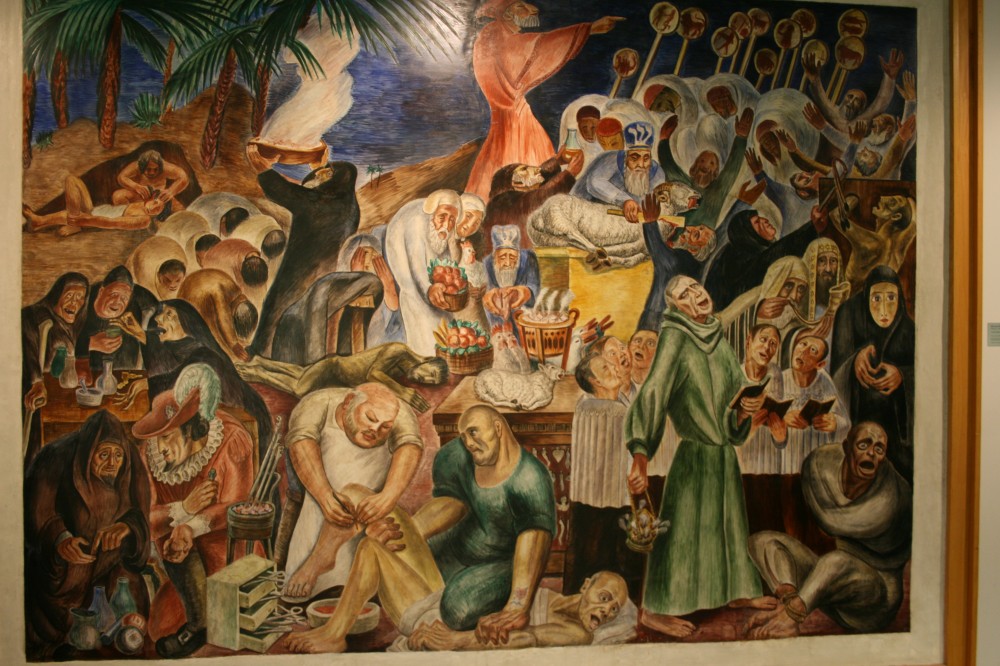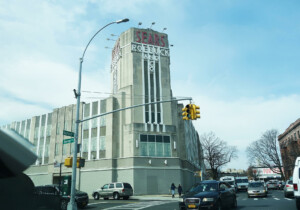With the announcement that the University of California San Francisco (UCSF) had tapped Herzog & de Meuron to design its newest medical center on the school’s Parnassus Heights campus, questions are still swirling about what will happen to the 10 New Deal-era murals installed in one of the buildings slated for demolition.
The 10-panel History of Medicine in California was commissioned by the UCSF and partly funded by the Works Project Administration (WPA) in 1935. One of 225,000 pieces of public artwork financed by the federal government as part of the New Deal. Polish-born Bernard Zakheim, a student of Mexican fresco artist Diego Rivera, was chosen by the school to paint the murals in Toland Hall, a lecture room in the UC Hall building, which were completed in 1938.
However, instead of relocating the murals, which the UCSF has claimed could cost upwards of $8 million, the school has decided to proceed with demolition; on June 4, UCSF issued a letter to Zakheim’s son Nathan Zakheim stating the murals were at risk. The issue allegedly stems from the high cost of removing the murals from their home pre-demolition, claiming that two separate historic preservation firms informed them that removing the artwork would cause irreparable damage. The letter gives the Zakheim family 90 days to pay for the removal themselves, and if they were unable, the school would then open removal options to the public.
“UCSF has decided not to use public funds to physically preserve the murals, especially at a time when the UC system faces financial challenges in the wake of COVID-19. This decision in no way has to do with any complaints about the murals,” the university told the San Francisco Chronicle.
The younger Zakheim, an art conservator based in Los Angeles, told J. The Jewish News of Northern California that those estimates were simply untrue, and that he could likely move and restore the collection for less than $1 million. That confidence stems from Bernard and Nathan’s working relationship; in 1967, the father and son duo worked to relocate and restore two of the elder Zakheim’s other UCSF murals (also from 1935), Rational Medicine and Superstitious Medicine, in the school’s Cole Hall. The other remaining members of Zakheim’s family are also reportedly engaged with the school as they feel that the 90 days offered was nowhere near enough time.

Now, another wrench has been thrown in the process, as the General Services Administration (GSA), responsible for managing the surviving pieces of WPA-era art, has reportedly told the school that it considers the murals on loan from the federal government. UCSF and the GSA are now reportedly in talks to preserve the mural, but if funding fails to come through, the school will reach out to other institutions and museums to gauge their interests. However, none of this means that demolition is off the table.
The 103-year-old UC Hall is still on track to be torn down in 2022, with the 16-story replacement hospital and research center on track for a 2030 completion date as part of UCSF’s Comprehensive Parnassus Heights Plan.











